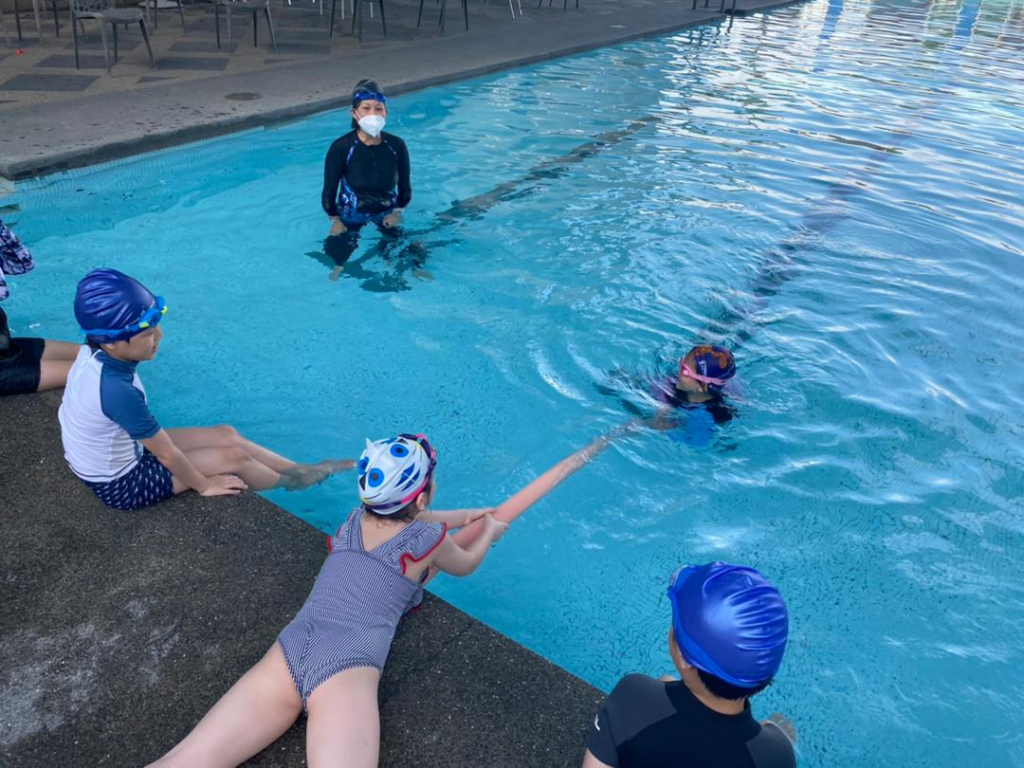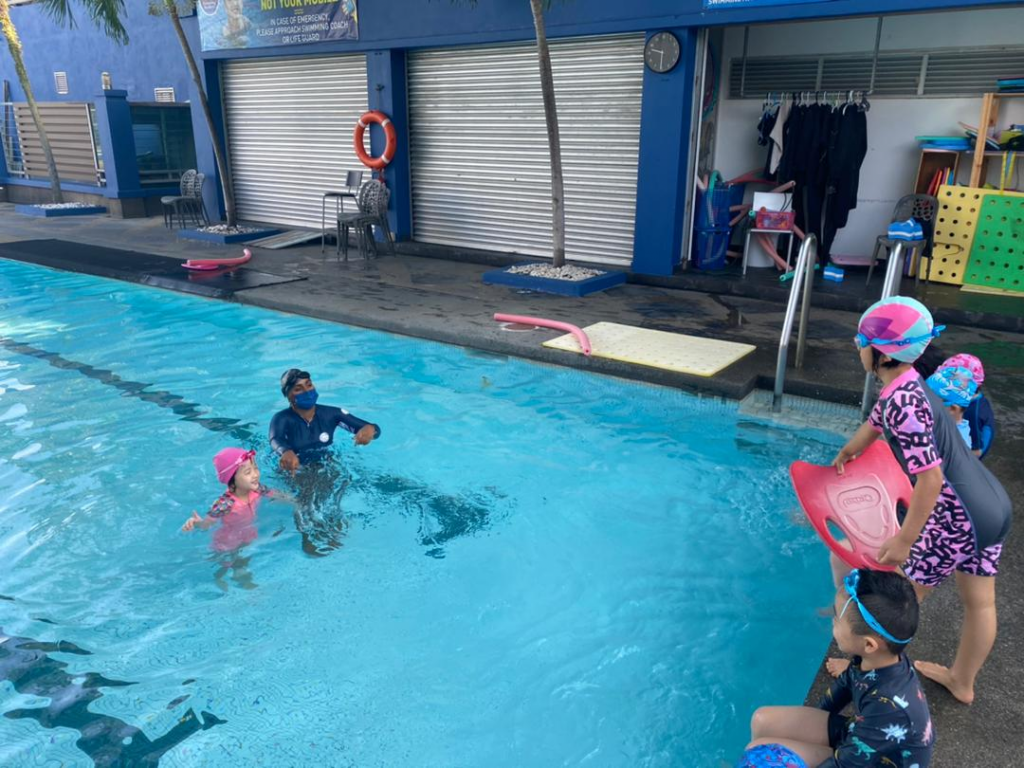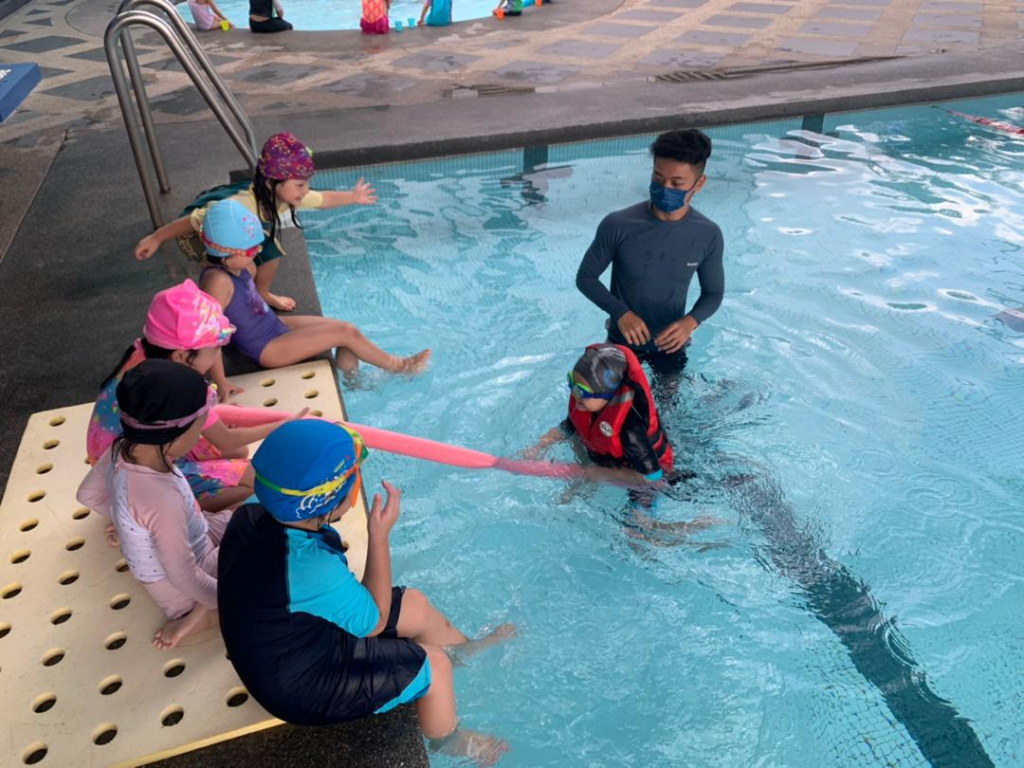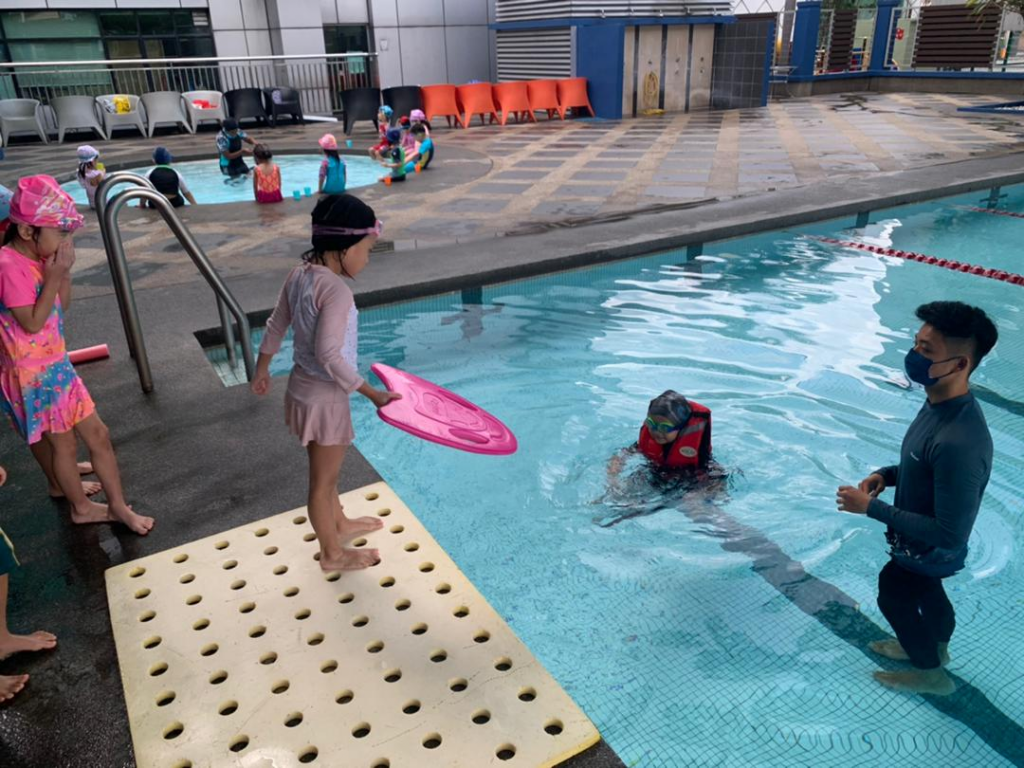UCSI CDC aims to create a school culture that is holistic for all age groups. In order to achieve such great heights, the children are exposed to an array of activities which consists of enrichment programmes, contextual learning and sports. In order for all these activities to be successful, UCSI CDC has worked hard to collaborate and even create their own programmes. Among these, is the UCSI Swimming Academy.
The UCSI Swimming Academy was founded with the aim to reduce overall drowning cases in Malaysia. In order to achieve this goal, UCSI Swimming Academy researched and developed their unique syllabus that caters to every individual of any age of any ability. Swimming teachers in the school are well-trained and experienced. From infants as young as 6 months to seniors in their 70s, this school does not discriminate. Instead, it provides everyone a chance to pick up a new skill while keeping healthy.

Apart from teaching the technicalities of swimming, swimming teachers also teach basic survival techniques. On 20 to 25 April 2021, UCSI Swimming Academy organised “Water Safety Week”. During this time, 5- and 6-year-old of children UCSI CDC were taught the rudimentary techniques of water survival and rescue.
The children were introduced to this vital skill through role play. Swimming teachers briefed the children on the possible dangers when a person is in a pool and talked about the different methods and material to use. The materials that the children were introduced to were pool noodles, board and a life jacket. The coach demonstrated the steps required in saving a person.

The first thing to do when there is a person drowning in the water is to search for an adult whether it be a life guard, teacher, parent, or worker. This person has to be within pool proximity in order to be able to help. Children were also briefed on not to jump into the water to save the victim under any circumstances. If no adult is available, there are two simple rescue methods: Reach rescue and Throw rescue.
‘Reach rescue’ requires the rescuer to lie down on the floor while holding a pool noodle. Next, the child has to extend the pool noodle to their friend who is in danger in the water and pull them to safety. The second method is ‘throw rescue’. In this method, the rescuer has to stand at a proper distance from the victim and throw any floating object available. In this activity we use kick boards. Rescuers throw the kick board directly in front of the victim or within arm’s reach of the victim. For children, this task would require hand- eye coordination and good aim. The children were able to complete both these tasks successfully.

Besides rescue, we also introduced children to the experience of wearing a life jacket in the deeper part of the pool. This was to acquaint the child to the feeling of wearing a life jacket while teaching them how to float and move.
The coach concluded the lesson by asking children important questions on the different methods of rescuing a person. All the children were able to answer these questions. This goes to show the importance of hands-on exercises and lessons for children. They learn better and grasp concepts faster when they are provided with opportunities to experience a new idea presented to them.

